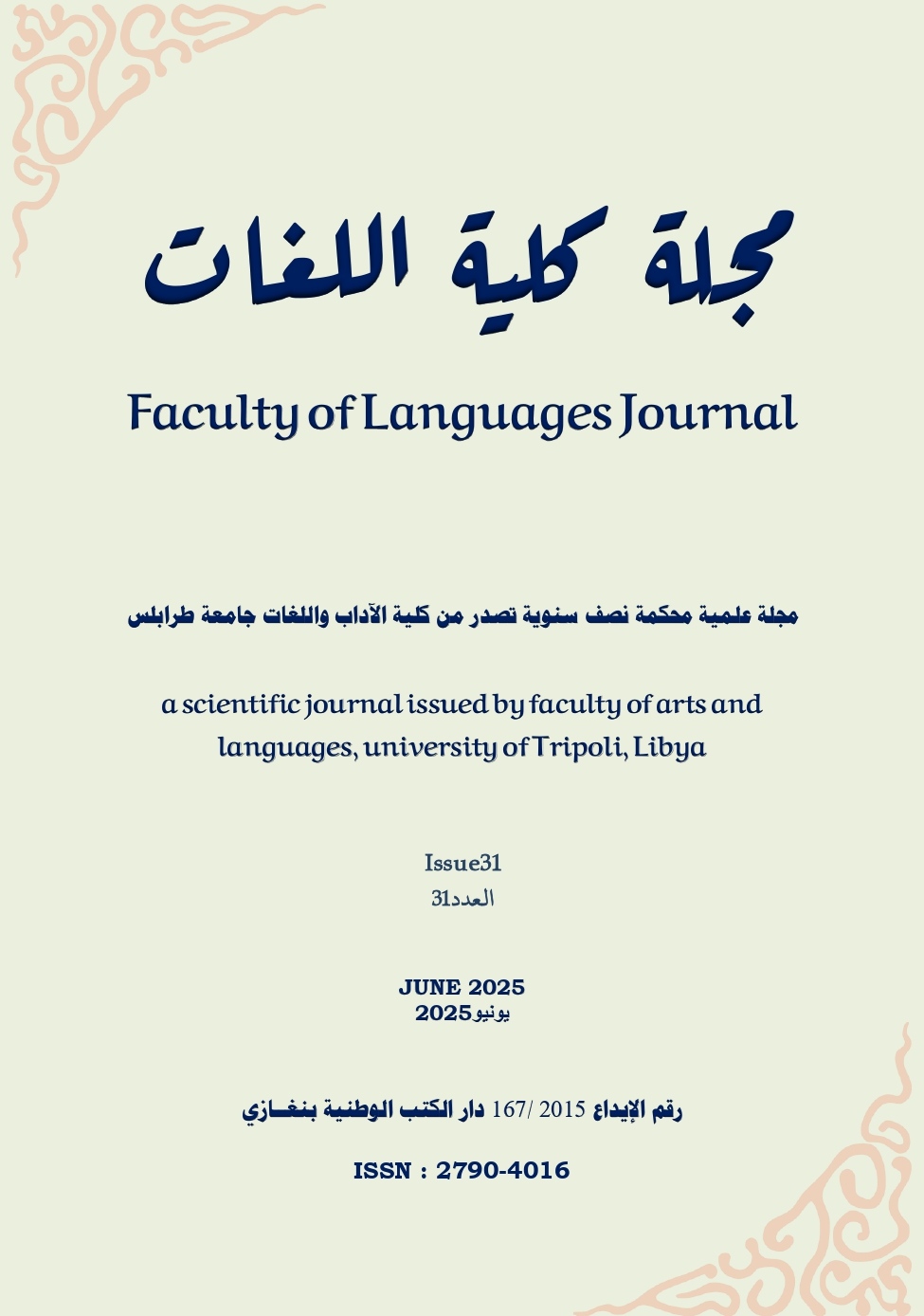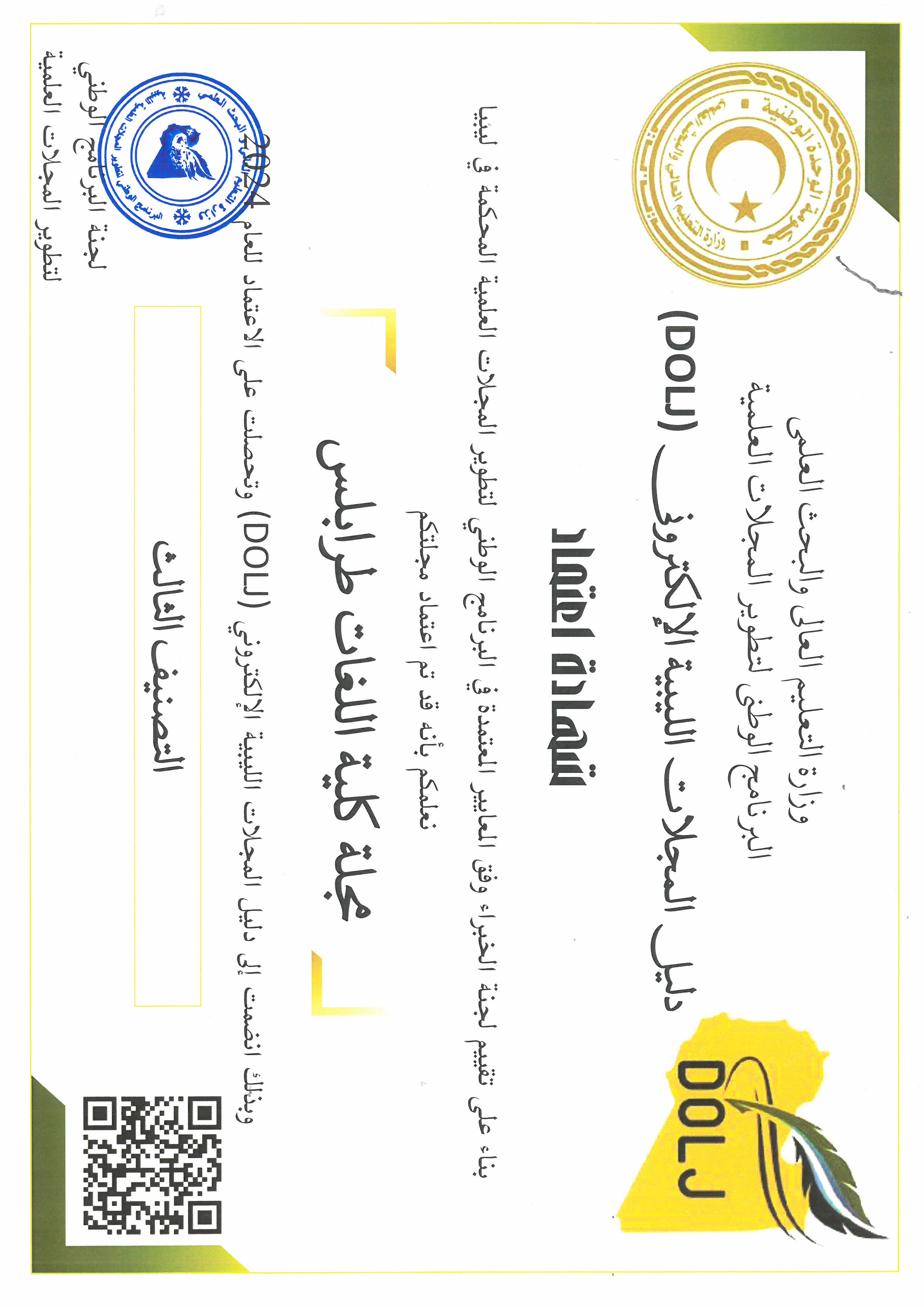The Power of Haiku in Literature Classes: Enhancing Creative Writing Skills to Undergraduate Students at the Faculty of Education / Janzour
الكلمات المفتاحية:
الهايكو، الكتابة الإبداعية، الأدب الإنجليزيالملخص
تستكشف هذه الورقة البحثية كيف يمكن للهايكو أن يعزز مهارات الكتابة الإبداعية لدى طلاب المرحلة الجامعية في قسم اللغة الإنجليزية بكلية التربية – جنزور، جامعة طرابلس. الهايكو، وهو شكل من أشكال الشعر الياباني، يتكوّن من ثلاثة أسطر وسبعة عشر مقطعًا صوتيًا. غالبًا ما تدور موضوعاته حول الطبيعة والمشاعر. استخدم الباحث منهجية مختلطة، شملت تقنيات كمية عبر اختبارات قبل وبعد لتقييم قدرات الطلاب الكتابية قبل المشاركة في كتابة الهايكو وبعدها، بالإضافة إلى تقنية نوعية تمثلت في مناقشات لرصد تصورات الطلاب. تشير النتائج إلى تحسن ملحوظ في مهارات الكتابة الإبداعية لدى الطلاب، ويتجلى ذلك في قدرتهم على إنتاج صور حية وحسية ضمن عدد محدود من الكلمات.
المراجع
Addiss, S. (2012). The art of haiku. Shambhala.
Carrera, F. (2016). The use of haiku to stimulate creative processes in the English language classroom.
Gross, M. U. M. (2000). The constraints of creativity. Creativity Research Journal, 12(1), 11–20.
Hakutani, Y. (2009). Haiku and modernist poetics. Palgrave Macmillan.
Higginson, W. J., & Harter, P. (1985). The haiku handbook: How to write, share, and teach. McGraw-Hill.
Kaufman, J. C., & Sternberg, R. J. (2010). The Cambridge handbook of creativity. Cambridge University Press.
Landis, J. R., & Koch, G. G. (1977). The measurement of observer agreement for categorical data. Biometrics, 33(1), 159–174.
Lida, A. (2010). Developing voice by composing haiku: A social-expressivist approach for teaching haiku writing in an EFL context. English Teaching Forum, 1, 28–34.
Lida, A. (2011). Revisiting haiku: The contribution of composing haiku to L2 academic literacy development.
Lida, A. (2017). Expressing voice in a foreign language: Multi-writing haiku pedagogy in the EFL context. TEFLIN Journal, 28(2), 276.
Lida, A., & Chamcharatsri, B. (2020). Emotions in second language poetry writing: A poetic inquiry into Japanese EFL students’ language learning experiences. Innovation in Language Learning and Teaching, 16(1), 53–66.
Oatley, K. (2011). The cognitive science of fiction. Wiley Interdisciplinary Reviews: Cognitive Science, 2(3), 232–239. https://doi.org/10.1002/wcs.1056
Santillán, J., Arévalo-Chuquín, M., Heras-Urgilés, E., Hidalgo, C., Orellana-Mora, X., & Piedra-Carrión, V. (2023). The influence of haiku composition tasks on the development of academic writing skills: A qualitative analysis. International Journal of Learning, Teaching and Educational Research, 22, 550–570.
Simonton, D. K. (2012). Taking the U-turn from creativity to structure: A commentary on the rhetoric of originality in the arts. Creativity Research Journal, 24(4), 309–311.
Stahlberg, S. (2021). Tehlikedeki diller dergisi (TDD) • Journal of Endangered Languages (JofEL), 11(19), July 2021.
Vygotsky, L. S. (1978). Mind in society: The development of higher psychological processes. Harvard University Press.
Whittingham, J. (2003). Haiku: Teaching the art of brevity in writing. Childhood Education, 80, 25–28.
Yasuda, K. (1957). The Japanese haiku. Tuttle Publishing.

التنزيلات
منشور
كيفية الاقتباس
إصدار
القسم
الرخصة
الحقوق الفكرية (c) 2025 Faculty of Languages Journal-Tripoli-Libya

هذا العمل مرخص بموجب Creative Commons Attribution 4.0 International License.
 https://orcid.org/0009-0002-8251-5878
https://orcid.org/0009-0002-8251-5878




